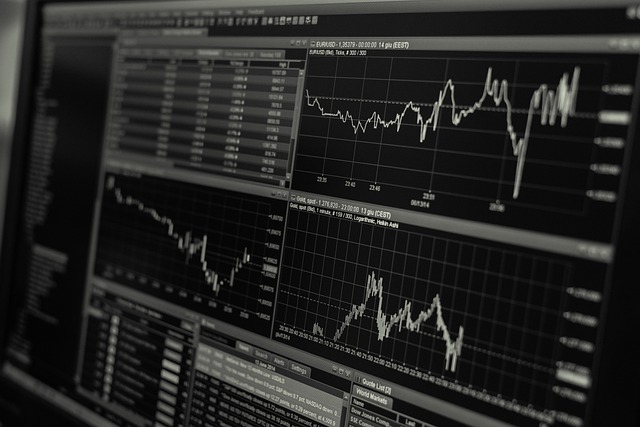Understanding Exchange Fees in 2025: A Comprehensive Analysis
Author: Jameson Richman Expert
Published On: 2025-09-08
Prepared by Jameson Richman and our team of experts with over a decade of experience in cryptocurrency and digital asset analysis. Learn more about us.
Exchange fees remain a cornerstone of cryptocurrency trading and investing in 2025, profoundly influencing trader profitability, strategic decision-making, and overall market health. As digital assets evolve in complexity, diversity, and institutional adoption accelerates, cryptocurrency exchanges have responded by refining and innovating their fee structures. These adjustments serve multiple purposes: generating revenue, incentivizing specific trading behaviors, attracting targeted user segments, and ensuring platform sustainability amid fierce competition and a complex regulatory landscape. The confluence of technological advancements, competitive pressures, and evolving compliance standards in 2025 has resulted in a nuanced, multi-layered fee ecosystem. This comprehensive analysis explores the mechanisms behind exchange fees, compares major platforms’ fee models, examines emerging trends, and offers actionable insights that can help traders optimize costs and secure a competitive edge in this dynamic environment.

What Are Exchange Fees? An In-Depth Overview
At their core, exchange fees are charges levied by cryptocurrency platforms for executing trades, accessing services, or maintaining accounts. They constitute the primary revenue stream for most exchanges, enabling continuous development, security enhancements, and customer support. In 2025, understanding the intricacies of these fees has become essential, as they directly affect trading margins, cost management strategies, and overall competitiveness of market participants.
Broadly categorized, exchange fees include:
- Trading Fees: These are charged per transaction and typically split into maker and taker fees. Makers add liquidity by placing limit orders that do not immediately execute, often receiving lower fees or even rebate incentives to promote market depth. Takers, executing against existing orders, generally incur higher fees. This tiered structure encourages liquidity provision, critical for efficient price discovery and market stability.
- Withdrawal Fees: Applied when transferring assets from the exchange to external wallets. These fees may be fixed or dynamic, influenced by blockchain network congestion, coin-specific transaction costs, or platform policies. Larger-volume traders or institutional clients often negotiate lower withdrawal fees, reflecting their significant transaction sizes and impact on network throughput.
- Deposit Fees: Many exchanges have eliminated deposit fees to attract users. However, some impose charges, especially for fiat deposits, to offset banking and processing expenses. Crypto deposits are often free or involve minimal costs, though fee structures can vary based on the deposit method and currency.
- Premium or Membership Fees: Subscription-based or tiered models offer benefits such as reduced trading fees, advanced analytics, priority support, or insurance coverage. These are tailored for professional traders, institutional clients, or high-net-worth individuals seeking enhanced services and features.
- Additional Service Fees: Fees for margin funding, staking, lending, or proprietary trading tools. Each service may have its own fee structure, which can be dynamic or fixed, depending on platform offerings and user engagement levels.
A comprehensive understanding of these fee types enables traders to craft optimized cost strategies, choose suitable platforms, and leverage discounts or premium services—vital in the fiercely competitive landscape of 2025.
The Evolving Landscape of Exchange Fees in 2025
By 2025, the architecture of exchange fees has become increasingly sophisticated, shaped by technological innovation, heightened market competition, and a complex regulatory environment. Several key trends characterize this transformation:
- Dynamic and Tiered Pricing Models: Many exchanges employ real-time, volume-based tiered fee structures that adjust according to trading activity. High-volume traders and institutional clients benefit from lower fees or exclusive discounts, encouraging greater liquidity provision. These tiers are often transparent, with clear thresholds, and some platforms offer customization based on user profile, trading volume, or engagement patterns, further incentivizing increased activity.
- Blockchain-Enabled Transparency and Smart Contract Automation: The integration of blockchain technology ensures immutable, transparent fee calculations. Smart contracts automate fee deductions, eliminating disputes and fostering trust. Transparent fee practices address common concerns about hidden charges, enhancing user confidence and compliance with regulatory standards.
- Service Bundling and Value-Added Features: Platforms increasingly combine fee discounts with ancillary services such as insurance, advanced analytics, staking opportunities, or early access to new tokens. This bundling strategy fosters user loyalty and diversifies revenue streams, aligning platform incentives with user engagement and retention.
- Hybrid DeFi and CeFi Models: The convergence of decentralized finance (DeFi) protocols with centralized finance (CeFi) platforms introduces hybrid fee structures. These models blend the low costs and composability of DeFi with the security and regulatory compliance of traditional exchanges, creating new trading paradigms that optimize costs and expand liquidity pools.
- Regulatory Compliance and Fee Transparency: Increased oversight by regulators mandates clearer disclosures and fair fee practices. Platforms are adopting standardized fee disclosures, conducting periodic audits, and publishing transparent reports, influencing fee structuring and reporting practices across the industry.
These developments collectively foster a more transparent, efficient, and competitive trading environment. Traders now benefit from enhanced control, clearer fee disclosures, and innovative tools to manage their trading costs effectively in 2025.
Impact of Exchange Fees on Trading Strategies in 2025
In 2025's highly competitive and technologically advanced market landscape, exchange fees significantly influence the viability and profitability of diverse trading strategies:
- High-Frequency and Scalping Trading: Traders executing thousands of trades daily depend heavily on minimal transaction costs. Reduced maker/taker fees, especially within tiered discount systems, are vital for maintaining profit margins. Platforms offering zero or near-zero trading fees, combined with low-latency infrastructure and advanced order types, empower these traders to execute rapid trades and capitalize on small price discrepancies efficiently.
- Long-Term Holding (HODLing): For buy-and-hold strategies, minor trading fee differences are often secondary to platform security, trustworthiness, and withdrawal costs. Priorities here include robust security protocols such as cold storage, multi-signature wallets, and insurance coverage, which protect assets over extended periods and foster confidence in the platform’s stability.
- DeFi Arbitrage and Cross-Platform Strategies: Traders exploit arbitrage opportunities across decentralized exchanges (DEXs) and centralized platforms. Gas fees on networks like Ethereum, which fluctuate based on network congestion, can erode profit margins. The use of fee forecasting tools and automation helps traders execute timely trades, mitigate costs, and maximize arbitrage opportunities.
- Institutional and Algorithmic Trading: Large-scale traders such as hedge funds often negotiate bespoke fee arrangements, seek low transaction costs, dedicated APIs, and rapid settlement. These traders are highly sensitive to network transaction fees and require sophisticated algorithms to optimize execution across multiple venues, maintaining a competitive edge.
In 2025, mastering the interplay between exchange fees, blockchain network costs, and execution strategies is vital for maintaining profitability and competitiveness in increasingly complex markets.

Major Exchange Platforms and Their Fee Models in 2025
Leading cryptocurrency exchanges differentiate themselves through innovative fee structures, comprehensive service offerings, and ecosystem integrations. Here’s a detailed overview of prominent platforms:
- Binance: Continues to dominate with a sophisticated tiered fee structure that rewards high-volume trading. Reduced fees are available when paying with the native BNB token, incentivizing platform loyalty. Binance offers an extensive ecosystem—spot trading, futures, options, staking, savings accounts, and launchpad projects—making it versatile for retail and institutional traders alike.
- MEXC: Features competitive maker and taker fees, with further discounts for holding MEXC tokens or participating in loyalty programs. Its broad asset listings, including emerging coins and DeFi tokens, appeal to traders seeking diversification and exposure to innovative projects.
- Bitget: Specializes in derivatives and futures trading, offering tiered fee discounts for VIP and professional traders. Its focus on leverage and hedging makes it an attractive hub for active traders seeking sophisticated trading instruments.
- Bybit: Emphasizes margin and derivatives trading with transparent, competitive fee schedules, zero deposit fees, and low withdrawal charges. Its focus on user experience, security, and innovative features like copy trading attract both institutional and retail segments.
When selecting an exchange in 2025, consider your trading volume, preferred asset classes, and the importance of additional features such as margin trading, staking, or insurance. These factors can justify slightly higher fees if aligned with your overall trading and risk management strategies.
Emerging Trends and the Future Outlook for Exchange Fees in 2025
Looking ahead, several key factors are expected to shape the evolution of exchange fee structures:
- Further Fee Reductions for High-Volume and Institutional Traders: As liquidity pools grow and institutional participation deepens, exchanges will likely lower fees for large traders to retain competitiveness, fostering more mature and resilient markets.
- Blockchain-Based Transparency and Automation: Blockchain integration will foster greater transparency in fee calculations, with smart contracts automating fee deductions, reducing discrepancies, and increasing trust—both among users and regulators.
- Expansion and Bundling of Service Ecosystems: Smaller or niche exchanges may form alliances or merge to offer comprehensive bundled services—including insurance, analytics, and liquidity solutions—potentially influencing fee models and delivering greater value to users.
- Hybrid DeFi-CeFi Fee Paradigms: As decentralized protocols become integrated with centralized platforms, innovative fee models combining low-cost transactions with regulatory compliance will emerge, expanding options and opportunities for cost-efficient trading.
Beyond Fees: Other Critical Factors in Platform Selection
While fees are vital, traders should holistically evaluate platforms based on:
- Security and Regulatory Compliance: Platforms with advanced security measures—cold storage, multi-signature wallets, regular audits—reduce hack risks and legal issues.
- User Experience and Support: Intuitive interfaces, reliable customer service, and platform stability directly impact trading efficiency and operational smoothness.
- Asset Coverage and Availability: A broad selection of cryptocurrencies, tokens, derivatives, and futures enables diversification and complex strategy execution.
- Incentive Programs and Ecosystem Benefits: Loyalty rewards, referral bonuses, staking incentives, and other programs can offset trading costs and augment profitability.

Conclusion: Strategically Navigating Exchange Fees in 2025
In summary, exchange fees in 2025 are a complex, multifaceted component that crucially impacts trading profitability and strategic flexibility. The ongoing shift toward transparent, tiered, and hybrid fee models presents opportunities for savvy traders to optimize costs. Developing a comprehensive understanding of fee structures, leveraging platform innovations, and remaining aware of emerging trends will help traders maintain a competitive advantage. Considering additional factors such as security, asset diversity, and ecosystem offerings ensures holistic decision-making, equipping traders to succeed amid rapid technological and regulatory changes. For further insights into the future of trade finance and related areas, consult this authoritative resource.